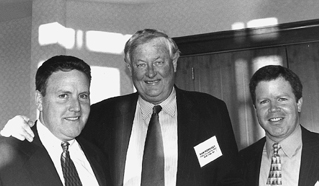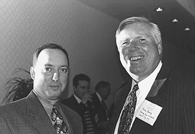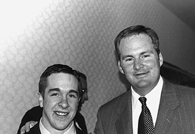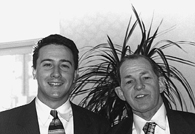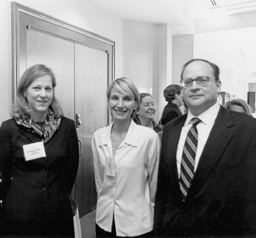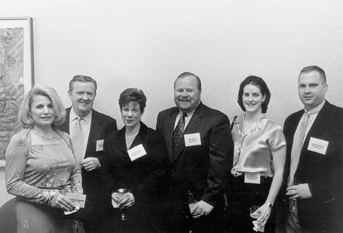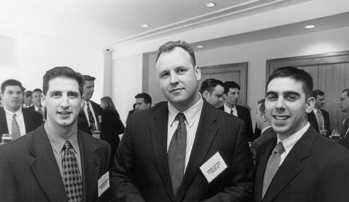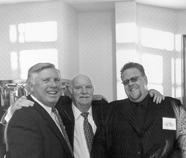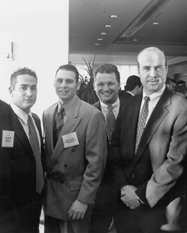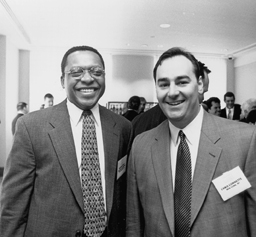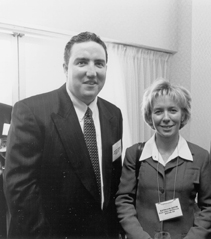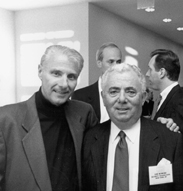A frightening thought must strike executives at market making firms when the Nasdaq Composite Index hits skid row: What good is the best military-style planning if the sun finally sets on the longest-running OTC party in history?
Military-style planning is the most striking feature of the current Nasdaq market making scene. Nasdaq trading firms, especially the largest, are implementing plans for a future based on an assumption that Nasdaq will still keep growing.
They are planning for a future in which retail order flow on some of the most actively traded stocks can be parlayed into successful block trades; a future in which an expanded universe of stocks is the magic formula for a firm that wants to internalize orders and optimize profit opportunities; a future in which Nasdaq has a shot at brushing aside the encroaching electronic communications networks and becoming, de facto, the largest ECN itself; a future in which institutional investors may get what some buy-side traders have demanded: a mandatory central limit order book with price and time priority.
Grandiose Vision
The biggest change will occur if Nasdaq can execute the grandiose vision of itself as a global market, trading stocks 24 hours a day across multiple time zones. Nasdaq has agreements with international partners and has talked hopefully about the quantum leaps in volume that could result. But the results are pending.
If the markets enter prolonged bear territory, however, the wave of change underpinning the structural shifts in the OTC markets may never occur. Indeed, it is reasonable to assume that the structures could evolve into a model driven more by conventional spread-based dealer business. Experts would probably look back too and wonder what pushed so many momentum investors over the cliff.
Nonetheless, dealers do not have crystal balls. They live in the present. That means planning yes, military-style planning. The annual Market Maker Survey conducted by Traders Magazine, spells it out: internalization of order flow is the number one topic. "Internalization is going to be the hottest industry issue in the coming year," said James Toes, director of Nasdaq trading at Merrill Lynch & Co.
Merrill is formulating its own aggressive plans to make markets in more stocks, going from 550 to 2000. The firm is even planning to transfer its current desk to a site somewhere in New Jersey. The site will be outfitted with advanced technology.
The survey, for 12 months ending March 31, 2000, was sent to the top 100 market makers as ranked by AutEx/BlockDATA, a service of Thomson Financial. The survey also used other industry measurements for the final list. A total of 41 market makers responded.
Profit Motivation
Internalization certainly stands out. The reason: In many cases it is more profitable trading the same OTC stocks on a principal instead of an agency arrangement, said Bernard Madoff, president at Bernard L. Madoff Investment Securities. (The survey shows that 62 percent of dealers saw an increase in profit margins per trade but that reflects institutional as well as retail trades.) Said Madoff, "More firms want to get a piece of the increased Nasdaq trading volume." As lower transaction costs fuel bare-bone retail commission rates from online discount brokerages, agency orders have become less attractive.
That strategy of trading more stocks on a principal basis has worked fine for the supergiant of Nasdaq market making, Knight Securities. Knight, less than five years old, is an astonishing success. Net income for the first quarter was $135.6 million, up 223 percent percent on the same quarter in 1999, on revenues of $531.1 million. That's a 152 percent jump in revenues compared to the first quarter of 1999. "Market volume and volatility are the main drivers of our business," said Kenneth Pasternak, chief executive of Knight/Trimark Group, parent of Knight Securities.
Knight envisages making markets in 6,000 Nasdaq, 5,000 bulletin board and 5,000 pink sheets in the coming 12 months, according to the survey. The firm currently makes markets in 10,422 OTC stocks. Salomon Smith Barney has taken steps in the same direction. Salomon named Jim Leman to supervise the introduction of technology, which will bring more order flow executions inhouse.
"Our technology must advance to the point that the vast majority of the flows that pass through our systems and back to the customer is untouched by human hands," Salomon said in an internal memo last December.
In a stunning reversal of a trend that saw dealers dropping stocks after the order handling rules, many now expect to make markets in more stocks in the next 12 months, according to the survey.
Fleet Trading said it currently makes markets in 4,700 Nasdaq and OTC stocks. The firm envisages increasing the roster to 5,600 stocks. (That includes 1,900 issues listed on the bulletin board, an area that has seen explosive growth.) Schwab Capital Markets said it currently makes markets in 4,619 stocks, projecting that number to grow to 5,545 (including 1,300 bulletin board stocks.) NDB Capital Markets, formerly Sherwood Securities, projects making markets in 5,300 stocks, up from the current 4,800.
Smaller Firms
Smaller firms are also planning to add more stocks, albeit at a more modest rate than Fleet and Schwab. John G. Kinnard said it is planning to increase its roster from 170 to 203; C.E. Unterberg from 133 to 200, and William Blair & Co. from 191 to 200.
All told, 68 percent of market makers that participated in the poll said they plan to make markets in more stocks; three percent planned to decrease while the others said they planned no change or else did not respond.
To be sure, other factors besides internalization are at play. Investment banking activity is clearly important at some full-service firms. But a squeeze on retail commissions is a significant force.
The changes afoot are occurring as the Securities and Exchange Commission concluded an examination on limit order transparency on both the OTC and listed markets. SEC Chairman Arthur Levitt earlier said he was "deeply troubled" by problems uncovered in the course of routine inspections. Levitt would like to see limit orders interact more competitively. Ideally, the markets would display more than the single best bid and offer price, as currently required.
Some dealers, including Madoff, seem to favor more interaction. "As more firms [internalize] their order flow there should be some sort of interaction to determine [best execution]," Madoff said. "If you have all these pockets of liquidity and no interaction, then you have the potential for problems."







